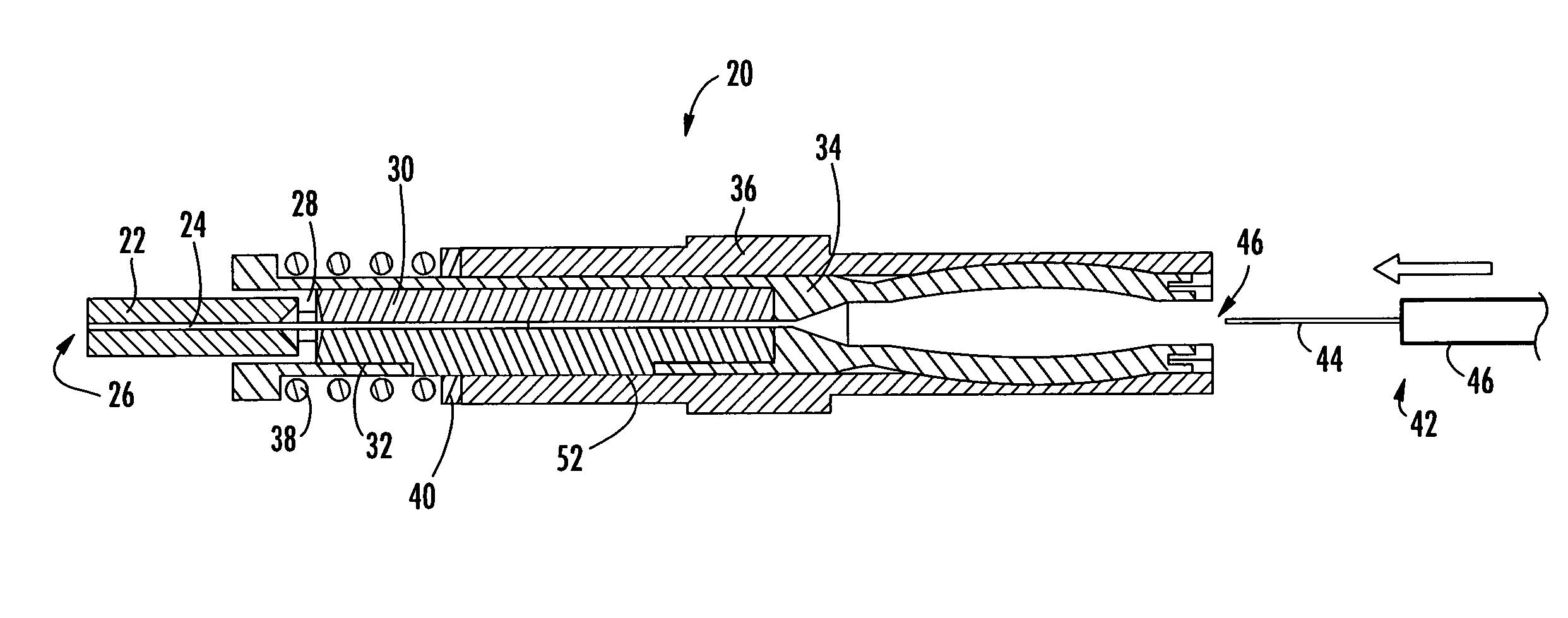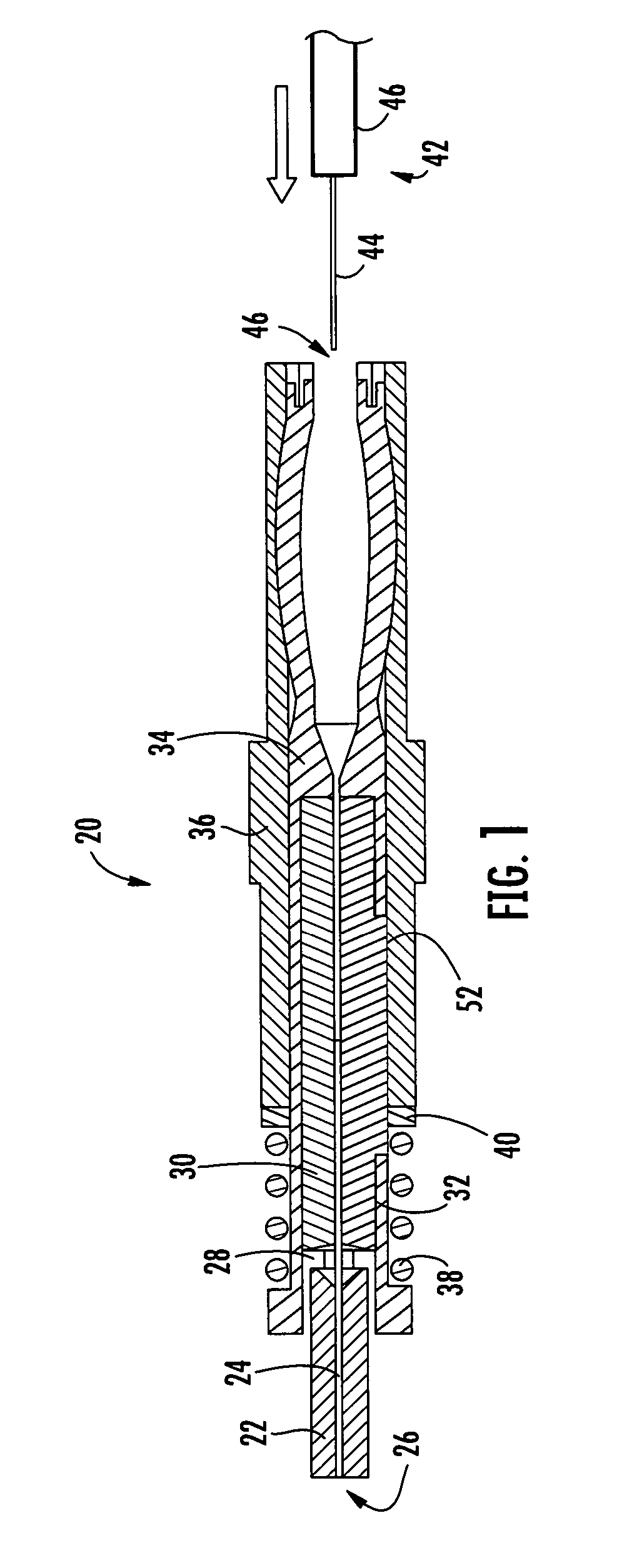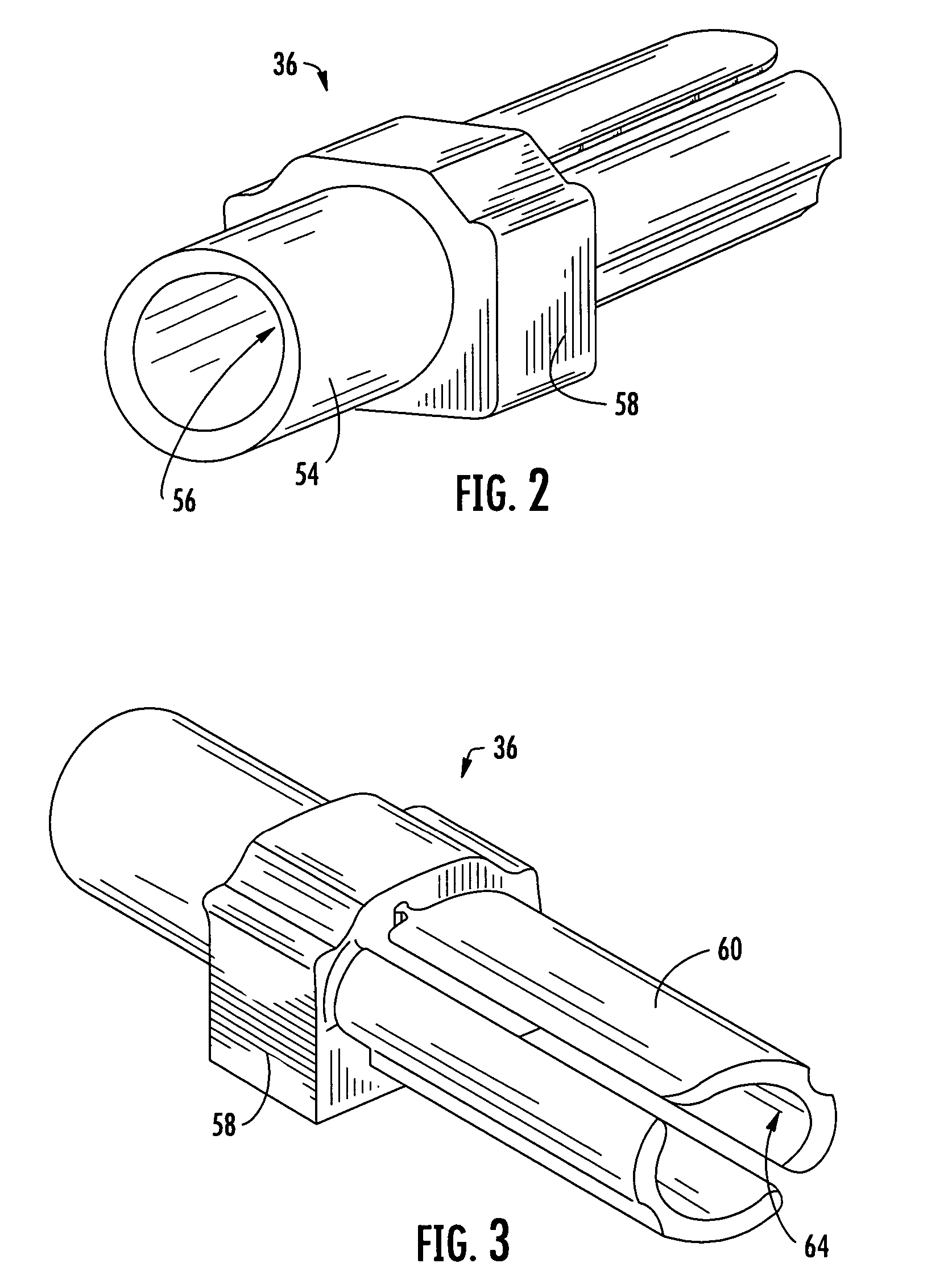Mechanical splice connector with sequential splice and strain relief
a mechanical splice connector and fiber optic technology, applied in the direction of optics, instruments, optical light guides, etc., can solve the problems of not always desirable to simultaneously terminate and strain relieve a field optical fiber, damage the field optical fiber or the connector, and the splice cannot be reversed and reworked, etc., to achieve the effect of adequate strain reli
- Summary
- Abstract
- Description
- Claims
- Application Information
AI Technical Summary
Benefits of technology
Problems solved by technology
Method used
Image
Examples
Embodiment Construction
[0026] Reference will now be made in detail to the present preferred embodiments of the invention, examples of which are illustrated in the accompanying drawings. Whenever possible, the same reference numerals are used throughout the drawings to refer to the same or like parts. Although apparatus and methods for sequential splice actuation and strain relief actuation are described and shown in the accompanying drawings with regard to a specific type of fiber optic mechanical splice connector, it is envisioned that the functionality of the various apparatus and methods may be applied to any now known or hereafter devised fiber optic connector in which it is desired to optically align one or more mating optical fibers and to strain relieve at least one of the mating optical fibers.
[0027] Referring now to FIG. 1, a lengthwise cross-sectional view of an exemplary fiber optic mechanical splice connector 20 is shown. The connector 20 includes a connector ferrule 22 defining a lengthwise-...
PUM
 Login to View More
Login to View More Abstract
Description
Claims
Application Information
 Login to View More
Login to View More - R&D
- Intellectual Property
- Life Sciences
- Materials
- Tech Scout
- Unparalleled Data Quality
- Higher Quality Content
- 60% Fewer Hallucinations
Browse by: Latest US Patents, China's latest patents, Technical Efficacy Thesaurus, Application Domain, Technology Topic, Popular Technical Reports.
© 2025 PatSnap. All rights reserved.Legal|Privacy policy|Modern Slavery Act Transparency Statement|Sitemap|About US| Contact US: help@patsnap.com



